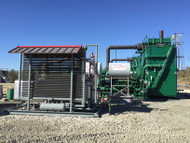What is a Fuel-gas Conditioning System (FCS)?
Posted by Cameron Croft on Jul 2nd 2019
What is a Fuel-gas Conditioning System (FCS)?
A fuel gas conditioning system processes fuel gas for compressor fuel or instrumentation gas. Croft Production Systems, Inc’s fuel-gas conditioning system, or FCS, is a one-of-a-kind system that is engineered to remove water and reduce the BTU.
The fuel-gas conditioning system utilizes multiple systems that are all combined in one package to condition fuel supply and instrument gas on the spot. The FCS uses the following types of processing equipment: Ambient Cooling System (ACS), the Joule Thomson System (JTS), and the Passive Dehydration System (PDS).
The gas that is being conditioned initially runs through the ACS to allow the gas temperature to drop and release water and other liquid condensates. The system passively cools the gas in a multi-pass cooler section, and the sections are designed to link together if added cooling is necessary before moving on in the process. Bringing the temperature of the gas to a more manageable level allows for the systems downstream of the ACS to be more efficient, which in turn provides cleaner fuel.
The second step in the fuel-gas conditioning systems is the PDS. In the PDS, the dew point of water is reduced even further. The goal of the PDS is to dehydrate the gas, therefore, preventing hydrate formation when entering the next stage.
In the final stage of the FCS, the JTS focuses on reducing the BTU to provide quality fuel gas.
What parts go to a Fuel-gas Conditioning System (FCS)?
It is recommended that the FCS be serviced on a 30-day schedule to ensure the system is running properly, as well as the parts. An FCS plant relies heavily on its parts to achieve a pressure drop and as with any system, there are parts that can wear down over time.
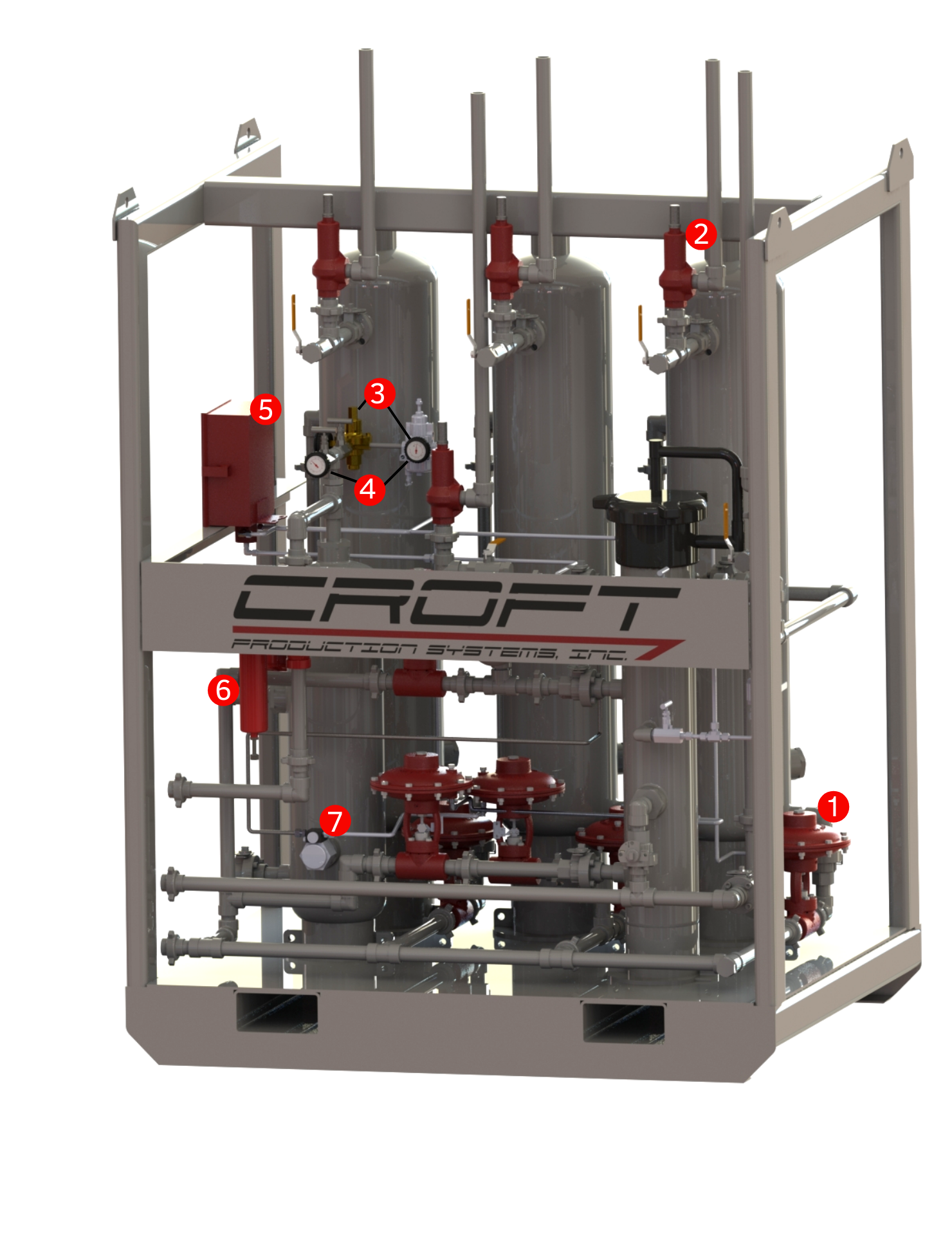 1. Dump Valves–A
Dump Valve is opened by a controller to drain the liquids from a vessel
1. Dump Valves–A
Dump Valve is opened by a controller to drain the liquids from a vessel
2. Pressure Safety Valves–A pressure relief valve is set to the unit’s maximum operating pressure to ensure safety. If the pressure exceeds that value, the valve will open, keeping the pressure within the safety limits.
3. Pressure Regulators–help monitor and maintain supply pressure to the dump valve and have gauges that allow for a service technician to view the pressures without disengaging the system.
4. Pressure Gauges–are designed to show process pressure.
5. Timer Boxes– a control panel that operates the activation of dump valves with duration and frequency.
6. Level Switches–The level switch is a control that operates the dump valve.
7. Temperature Gauges (Not Pictured)–Temperature Gauges are designed to show process temperature.
8. O-Rings (Not Pictured) –O-Rings are a gasket in the form of a ring with a circular cross section, typically made of pliable material, used to seal connections in pipes, tubes, etc.
9. Coalescing Filters (Not Pictured) – Coalescing filters remove impurities from the gas stream.
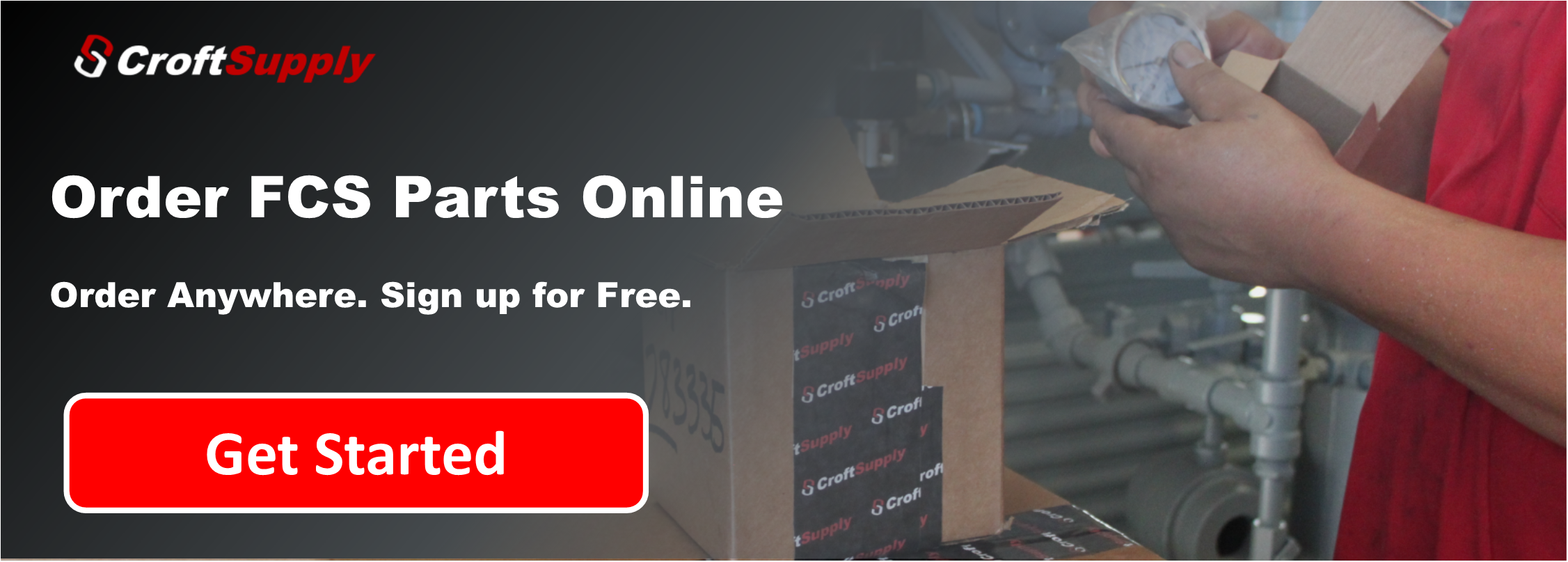
Want to look at all the fuel-gas conditioning system parts Croftsupply.com has to offer? Click here.
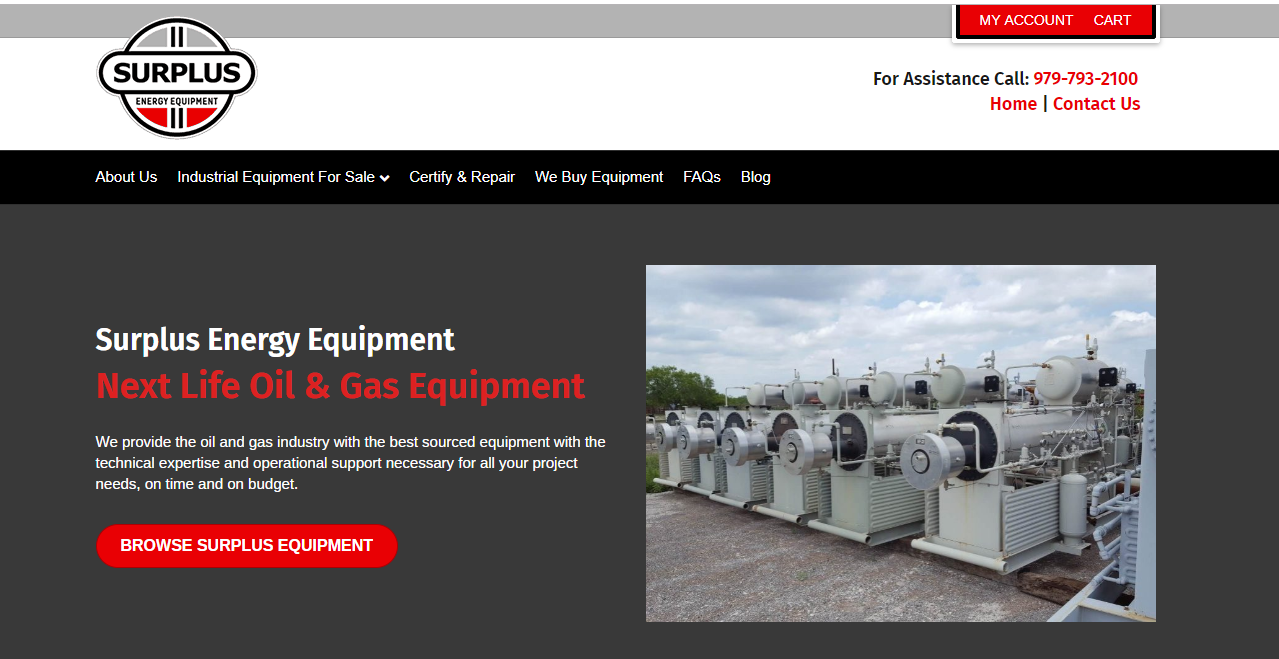
Want to purchase used or surplus equipment? Click here for SurplusEnergyEquipment.com
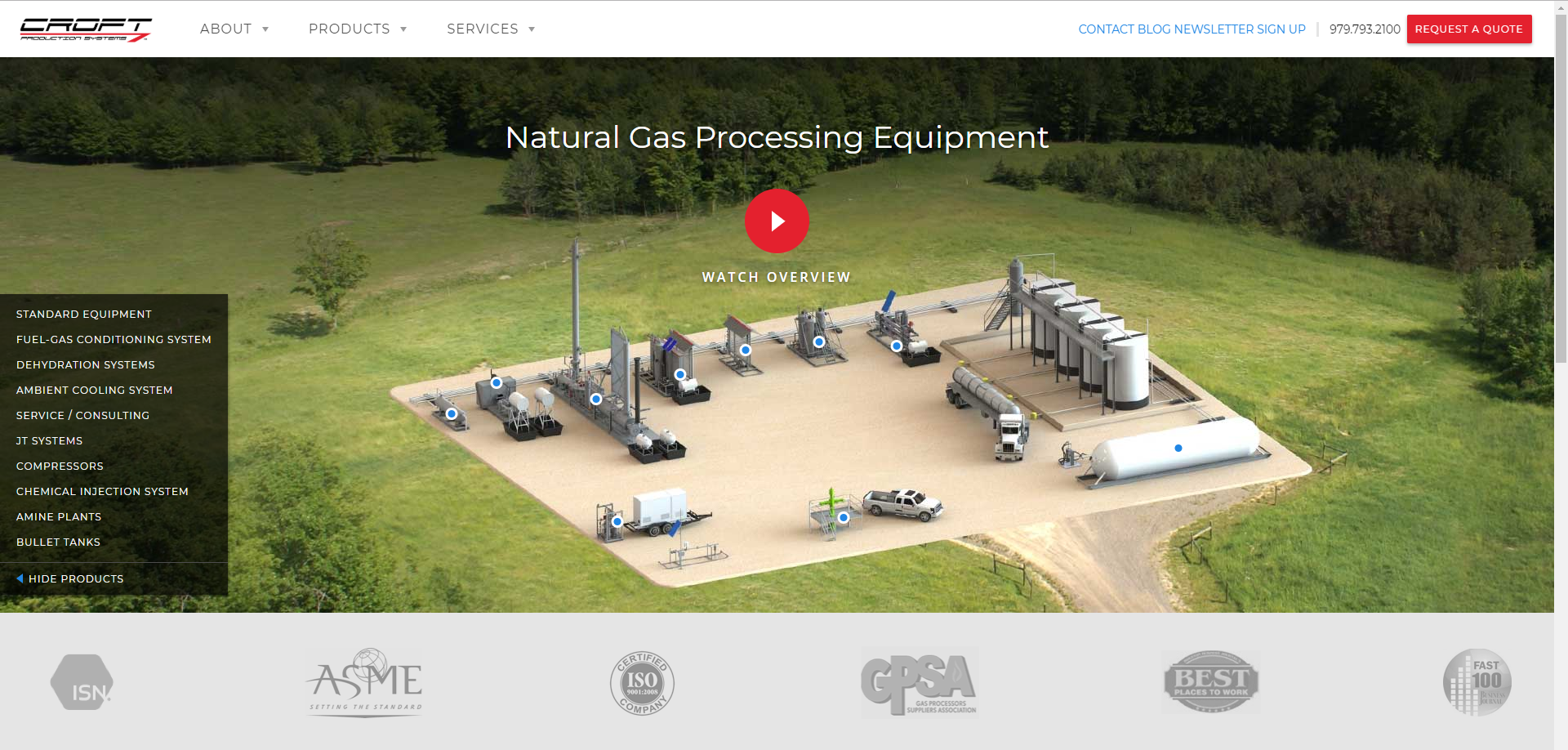
Want to lease or purchase new or re-certified fuel gas conditioning equipment? Click here.



